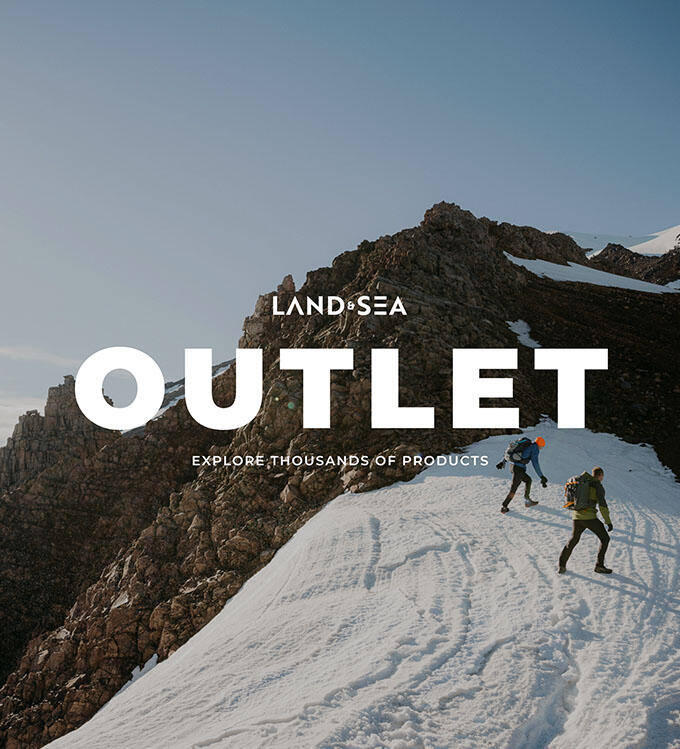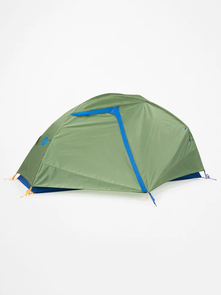Product Description
The 1 Peron Tent for the Solo Travller
Going Solo? Then look no further than the Marmot Tungsten 1-Person Tent. This trekking tent, which has extra headroom, is the ideal getaway tent. When the downpour comes, the tent's seam-taped fly and catenary-cut floor provide awesome weather protection, and its shorter folded pole length makes it simple to pack away and go bikepacking, kayaking, or both.
Interior pockets and a lampshade pocket safely retain your headlamp to offer internal ambient light. The fabric is solution-dyed which uses less water during production and is UV-resistant. Footprint included.
Marmot Tungsten 1P Tent Specifications:
- Floor Fabric: 100% Polyester, Taffeta, 65g/sqm
- Fly Fabric: 100% Polyester, Ripstop, 63g/sqm
- Footprint Included: YES
- Packed Size: 18.1 x 5.5 in, 46.0 x 14.0 cm
- Style Number: M12307
- Floor Area: 19.4 sq ft, 1.8 sq m
- Main Canopy Fabric: 100% Polyester, Ripstop, 56g/sqm
- Minimum Weight: 3 lbs 9.1 oz, 1.62kg
- Number of Doors: 1
- Number of Poles: 2
- Pole Material: Velocity HD
- Vestibule Area: 8.61 sqft, 0.80 sqm
Facts
Q: How do I know what size hiking tent I need?
When choosing the size of your tent there are a few things you need to consider. Start with how many people will be sleeping in your tent. If weight & size are not major factors, then we recommend upsizing by 1. For example, if it’s you & one other then we would suggest a 3-person tent. If you are looking for the most compact solution, then stay true to the occupants within your tent.
Q: How heavy should a hiking tent be?
Ideally as light as possible however there are a few factors at play. As a general rule of thumb, the higher your budget the more compact your tent can be due to the use of higher-quality materials. Your weight will also be dependent on the size you choose. If you are travelling by foot or bike then our recommendation is to go as light & compact as you can afford.
Q: What makes a tent, a hiking tent?
Hiking tents are designed to be lightweight, durable & versatile for adventure purposes. Hiking tents generally vary between 1-person
& 4-person in size. Designed to provide maximum protection for the user with the ability to easily pack up & carry around with as little hassle as possible. Hiking tents are also designed to handle variable conditions from Wind & Snow to heat.
Q: What waterproof rating do I need in my hiking tent?
All hiking tents are rated with a ‘MM’ rating. This rating directly measures the water pressure the fabric can withstand. For example, a 2,000mm rating can endure 2,000mm (2 meters) of water baring down on the tent before it begins to leak. Hiking tents are generally rated between 800mm & 10,000mm – finding the right water rating is important when considering the conditions you intend to camp.
Q: Do I need a footprint for my hiking tent?
Footprints are highly recommended for most tents but most definitely for hiking tents. Footprints take up minimal extra room in your pack but add a vast array of benefits. Here are some of the key benefits. Reduction in condensation, extra warmth, greater durability, additional waterproofing & aiding set up by acting as a template.
Q: Do I need an all-season hiking tent for New Zealand conditions?
The most popular hiking tents in NZ tend to be 3-season or ‘all-season’ tents due to the variable conditions. 3 season tents are designed to deal with Summer, Autumn & Spring conditions. ‘All Season’ or 4 season tents ensure you are kept safe & dry during winter seasons. If you intend to camp during the cooler months it is our recommendation to look at an ‘all-season’ tent.
Q: How much do I need to spend when buying a hiking tent?
When choosing your ideal hiking tent, price is generally a factor to consider. As a general rule of thumb the more expensive your hiking tent the more lightweight & compact it will be without compromising its durability to the environment. For the majority, the amount of use your tent will get is a big factor in how much you spend. Our recommendation is to consider the conditions you intend to use your tent vs the packability & weight. For example, if you require an ‘all season’ hiking tent to fit into your hiking pack then be prepared to pay a little extra.
Q: What is the best shape of hiking tent?
Hiking tents come in many different shapes & styles. Much of this comes down to manufacturing design however the shape will also affect the packability of the tent itself. For example, more rounded, dome-like tents will generally have a larger pack down size & subsequently be slightly heavier. A streamlined design, often found in 1-person tents allows for manufacturers to keep weight & pack size to a minimum. Please keep in mind that the shape will directly affect the space inside the tent.
Q: Can a child sleep in a hiking tent?
The short answer is yes. We would suggest stepping up one size to allow for extra space. We would also suggest purchasing a footprint for your tent to make the sleeping conditions more comfortable for your child in the instance they are hiking with you.
Q: What tent is best for me if I get claustrophobic?
As above, our recommendation is generally to step up one size if & when possible. If you do happen to get claustrophobic, then this would be highly recommended. It may also be worth leaning towards a more dome-style tent for added internal space.

Expert Review
Our experts are currently reviewing this product & will be providing their review shortly.






















